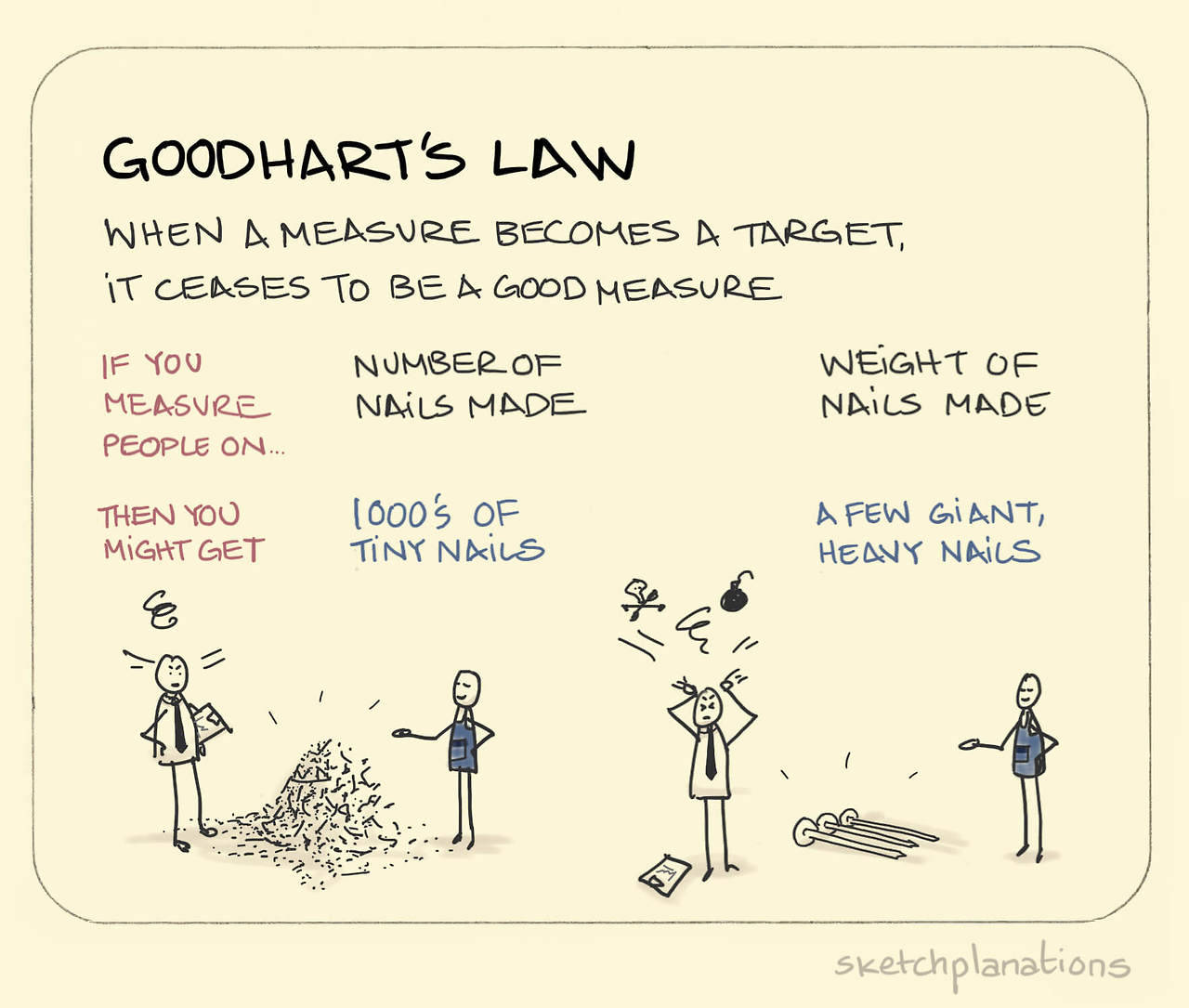Some problems are “oak tree problems” and being a data-driven enterprise is one of them. An oak tree problem is one that is characterized by the need to have started working on the problem quite a way back in the past while also being specifically relevant today. The Chinese proverb “The best time to plant an oak tree was 20 years ago. The second best time is today.” describes this idea to perfection. Many of the customers I’ve worked with have struggled with creating a set of robust key performance indicator (KPI) tools to allow leaders and contributors to engage in rapid decision making that is grounded in real data.
There are a number of reasons both imagined and real that stop enterprises, teams, and individuals from collecting sufficient data to drive grounded decision making. But rather than starting with the false dichotomy of “Would you rather me do the work or report the work?”— I’ll explain how the struggle to capture and report on KPIs results in a downward spiral that just keeps repeating itself.
A tragedy in three acts
Act I – The annual “do more with less” speech

Does this sound familiar? The ritualistic “do more with less” speech is delivered to teams around the world under the banner of efficiency regardless of any other contextual factors or initiatives that impact the teams responsible to deliver business results.
Act II – The fire drill
The second act in this all too familiar tragedy is that moment when one too many corners have been cut, an incident occurs and panic sets in from any number of factors (e.g., a failed change, a missed requirement setting a key project back weeks or months, a security breach, a network outage, etc.).
Act III – The beat down
The third and final act commences once the fire drill has been completed and the investigation begins to find the “root cause” of the incident. Despite all the industry data that blameless post mortems outperform RCAs, few corporations use this methodology and even when they do, the outputs of exercise are quite often shelved. Each of the methods when applied rigorously, produce an output that point back to earlier decisions and lack of commitment to improve basic capabilities. Rather than taking a balanced stance on accountability and recommit to applying best practices, all to often the leaders’ response is framed in one of two messages:
- The responsible team/person didn’t do their job well and let leaders know the risks involved in cutting corners or…
- The responsible team/person didn’t do their job well and let leaders know the risks involved in cutting corners in a way that leaders could understand the concerns (i.e., you are responsible for making me understand even when I consciously choose not to listen).

After the beat down, the cycle begins anew.
Despite the doom and gloom of the all too common tragedy, there is, however, another way that offers the chance of hope and a virtuous circle. This other path is called the “data-driven enterprise” and while many aspire to get there are few who know how it works or where to start.
Getting in the loop
In the 1950s, United States Air Force Colonel John Boyd changed the world with his decision-making framework known as the OODA loop, The OODA loop is the decision cycle of observe, orient, decide, and act. Boyd applied the concept to the combat operations process, often at the operational level during military campaigns. It is now also often applied to understand commercial operations and learning processes, litigation strategy, game theory and even software development as it is embedded inside Agile, DevOps and LEAN.

The OODA loop approach favors agility over raw power in dealing with opponents in any competitive endeavor. An entity (whether an individual or an organization) that can process the cycle more quickly, observing and reacting to unfolding events more rapidly than an opponent can thereby “get inside” the opponent’s decision cycle and gain the advantage.
Notable modern references of the OODA Loop as a basis for understanding enterprise agility include Eric Ries of lean startup fame, Adrian Cockroft the prime architect beyond Netflix’s world class resiliency, and Microsoft in their approach to devops. As well as Peter Senge, author of “The 5th Discipline,” who stated: “The only sustainable competitive advantage is an organization’s ability to learn faster than the competition.”
As in all things, however, gathering data (i.e., observe) for decision making isn’t sufficient in and of itself, because in order to make good decisions based on data you must have “data grounded in context.”
Foiled again! The threat of weaponization and gamification
Two decades after Boyd in 1975 English economist, Charles Goodhart famously noted that “when a measure becomes a target, it ceases to be a good measure.” This adage has come to be known as Goodhart’s Law wherein “any observed statistical regularity will tend to collapse once pressure is placed upon it for control purposes.” The layman’s explanation is that once humans are given metrics, they will find ways to artificially hit any target because the quantitative systems can always be rigged.

No matter what industry you work in, or even if you don’t work within an industry, you’ll probably be familiar with the effects of Goodhart’s law where humans within a system will either:
- Gamify metrics: where individuals will artificially manipulate the outcomes of activities to achieve an “optimum result” (e.g., the flaws of standardized testing in schools) or…
- Weaponize metrics: where leaders will hyperfocus on a metric to justify consequences they wish to apply upon individuals or teams (e.g., see Act III – The Beat Down above)
And once again, despite the doom and gloom of the all too common tragedy of gamification/weaponization scenario, there is another way that offers the chance of hope and a virtuous circle. This other path is defined by how you define, gather, and present the metrics you capture.
In part 2 of this blog series, we will discuss and detail 11 specific, industry-tested, best practices; each of which will help you tame the forces of gamification and weaponization and create an enterprise-driven off of data and facts rather than reflexive instincts and anecdotal feelings.









